Blue budgies, renowned for their captivating shades and vibrant personalities, make fantastic pets and are of great interest to bird enthusiasts.
Though naturally green, budgies are now available in a variety of colors, including an intriguing spectrum of blues, thanks to selective breeding.
As a former budgie owner and a bird lover, I decided to delve deep into the world of blue budgies, exploring their diverse shades like Sky-Blue, Cobalt, Mauve, Gray, Violet, and the unusual Albino budgies.
This guide, drawing from my experiences, readings, and observations, is tailored for those who share this fascination and are curious to learn more about these blue wonders.
I also added gray budgies and albino budgies since they are among the blue series budgies although they are not blue.
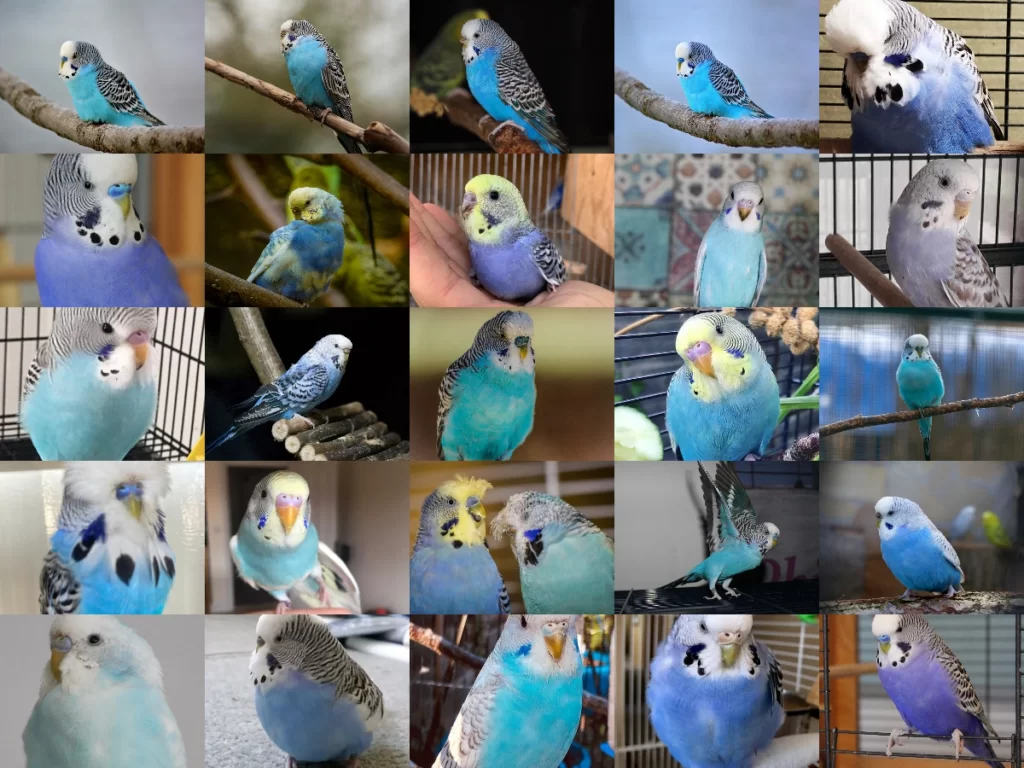
What Does Blue Series (White-Based) Budgie Mean?
In the realm of bird breeding, particularly within the Budgerigar species, the term ‘Blue Series (White-Based) Budgie’ refers to a unique classification of Budgies based on their specific color genetics.
The blue series involves Budgies whose base color is a light or sky blue, resulting from the lack of the yellow pigment due to a genetic mutation.
This is in contrast to ‘Green Series’ Green Budgies, which have yellow-based coloration.
Furthermore, the phrase ‘White-Based’ emphasizes the underlying or base color of the bird’s feathers when the yellow pigment is absent, showcasing a white hue rather than the yellow seen in the green series.
To put it simply, a Blue Series (White-Based) Budgie is a budgie that genetically lacks yellow pigmentation, resulting in sky blue to white color variations.
It’s worth noting that these distinctive colorations not only contribute to their aesthetic appeal but also provide valuable insights into the budgie’s genetic heritage.
A Colorful Spectrum: White-Based (Blue Series) Budgie Variations
The White-Based (Blue Series) Budgies unfurl an attractive spectrum of color variations ranging from the lightest sky blues to the darkest mauve hues.
These variations are largely governed by the bird’s genetic composition.
It’s important to note that while these color names might differ across various classifications, this guide adheres to the names and classifications established by The WBO Colour Standards (archived).
Sky-Blue Budgie (Light Blue)
At the lighter end of the spectrum, the Sky-Blue Budgie stands out with its uniquely light shade.
According to the standards, this particular variation must display an evenly distributed light blue body color.
The bird’s cheek patches should showcase a regal blue hue, while its long tail feathers take on a darker cobalt shade.
The Sky-Blue Budgie’s light hue often gives it an almost white appearance, particularly in bright light.
This color is elegantly offset by the bird’s black flight feathers, which offer a striking contrast to its light body color.
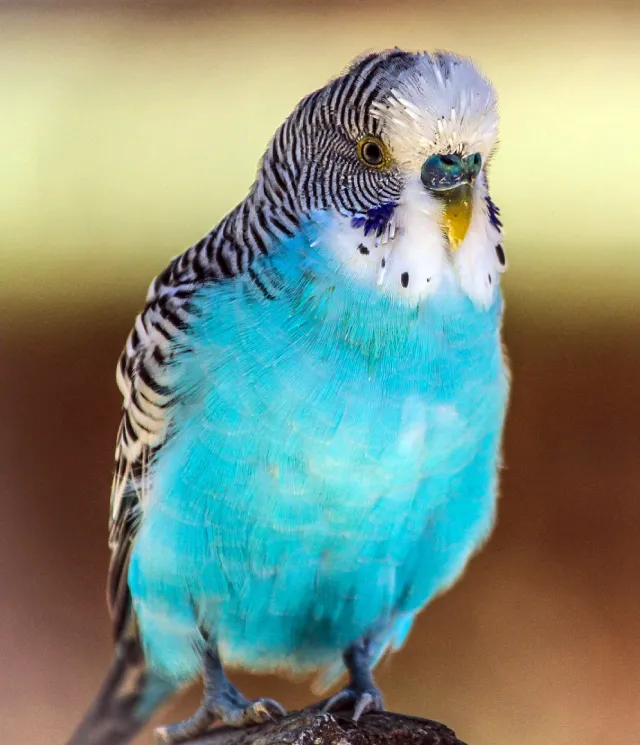
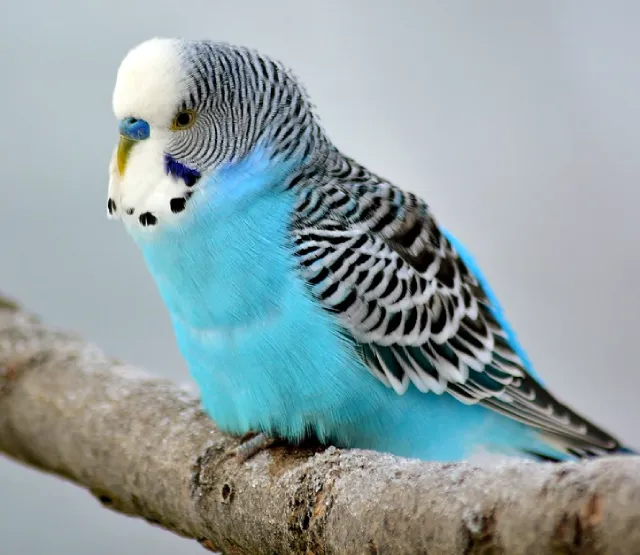
Cobalt Budgie
Venturing further into the spectrum, the Cobalt Budgie exhibits a middle-of-the-road shade of blue, neither too light nor too dark.
The standards dictate that the body color of a Cobalt Budgie should be a vivid, medium blue that resembles a clear, sunny sky.
Its cheek patches should display a vibrant violet-blue color, while the long tail feathers exhibit a darker shade of cobalt blue.
This diverse blend of blue shades creates an aesthetically pleasing palette that makes the Cobalt Budgie an eye-catching addition to any aviary.
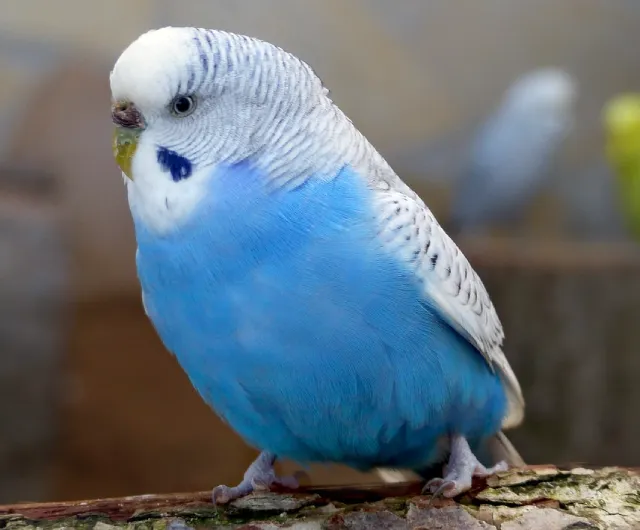
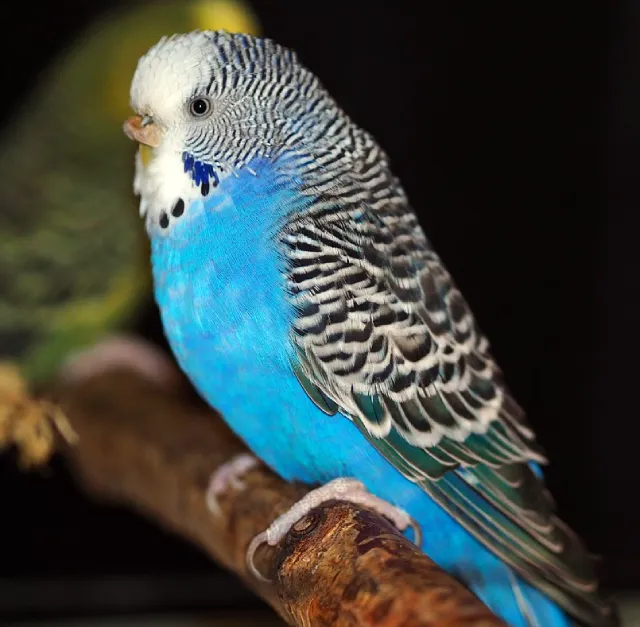
Mauve Budgie
Rounding off the spectrum, the Mauve Budgie showcases the darkest shade within the Blue Series.
As per the standards, a Mauve Budgie’s body color should be a rich, dark blue with a tinge of grey, giving it a slightly muted, yet equally mesmerizing appearance.
The bird’s cheek patches should be royal blue, while its tail feathers boast a dark cobalt blue color, bordering on black.
The Mauve Budgie’s deeper coloration provides a compelling contrast to its lighter Blue Series counterparts, exhibiting the impressive range of diversity within this single series of budgie color variations.
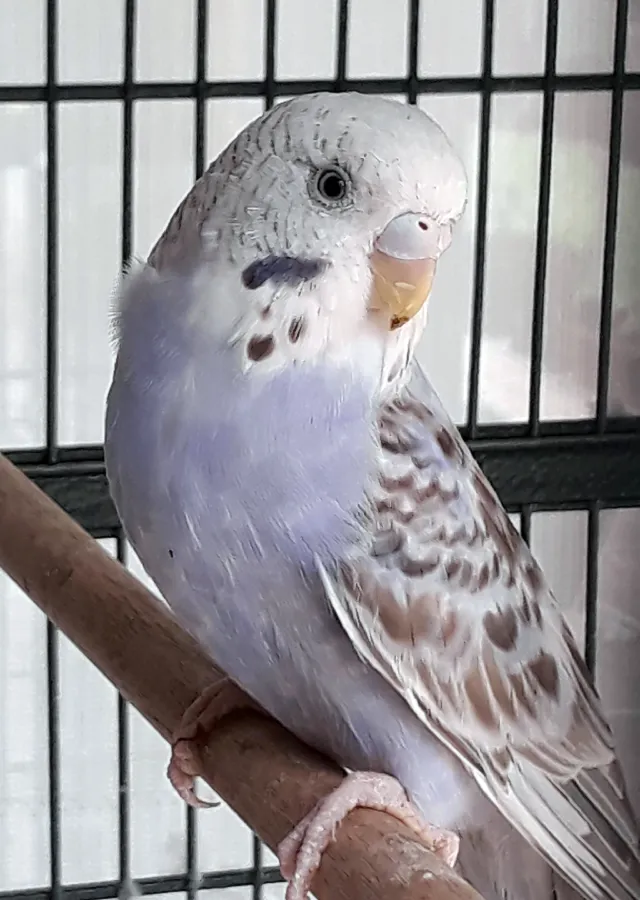
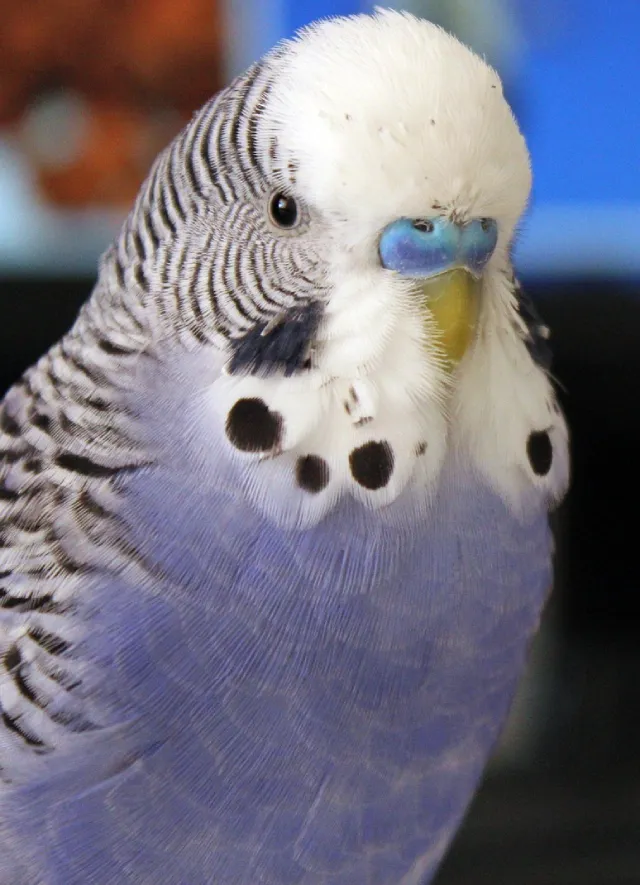
Violet Budgie
Rounding off this exploration of color variations, the Violet Budgie brings an exotic touch to the white-based series.
As defined by the standards, a Violet Budgie should showcase a body color that’s a rich, deep violet-blue.
Its cheek patches should exhibit a striking violet color, while its long tail feathers should be a deep, dark violet, nearly black.
This intense, exotic hue makes the Violet Budgie a captivating sight and a desired addition for bird lovers seeking a uniquely colored member for their aviary.
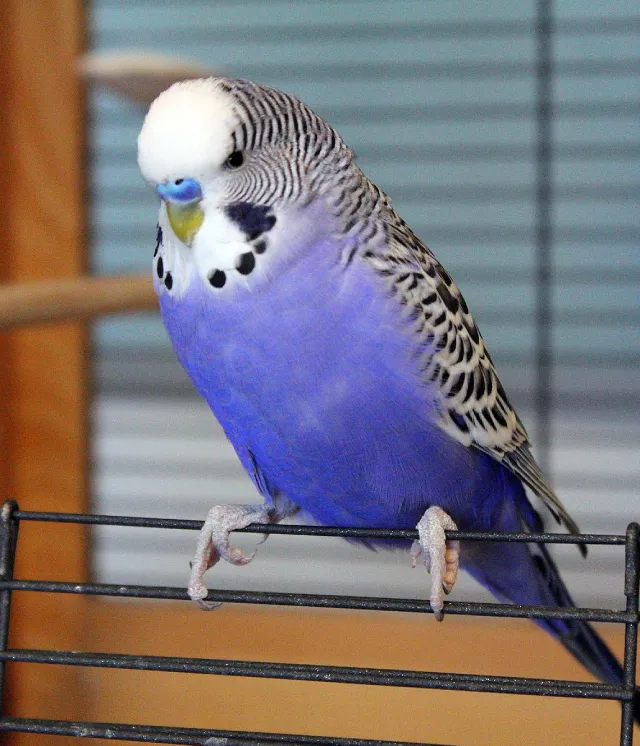
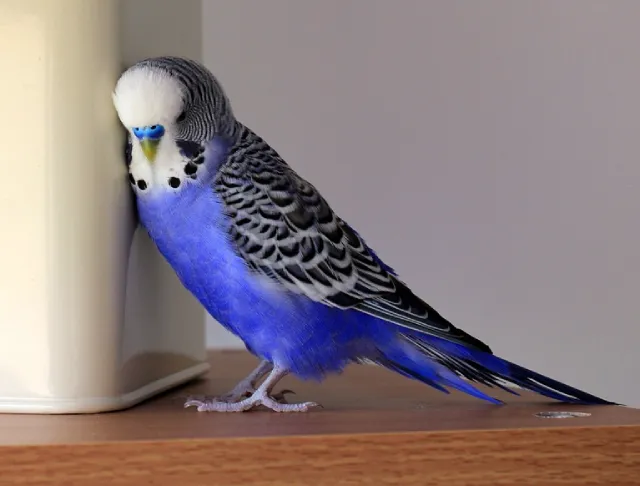
Gray Budgie
Stepping outside the traditional blue hues, the Gray Budgie introduces a unique color variation to the white-based family.
Adhering to the standards, this budgie exhibits a dusky gray body color.
Its cheek patches carry an intriguing silvery-blue hue, while the long tail feathers showcase a darker slate gray, providing an interesting contrast.
The Gray Budgie’s unique coloration offers an alternative for bird enthusiasts who favor a more neutral-toned aviary while still desiring the characteristic budgie personality and charm.
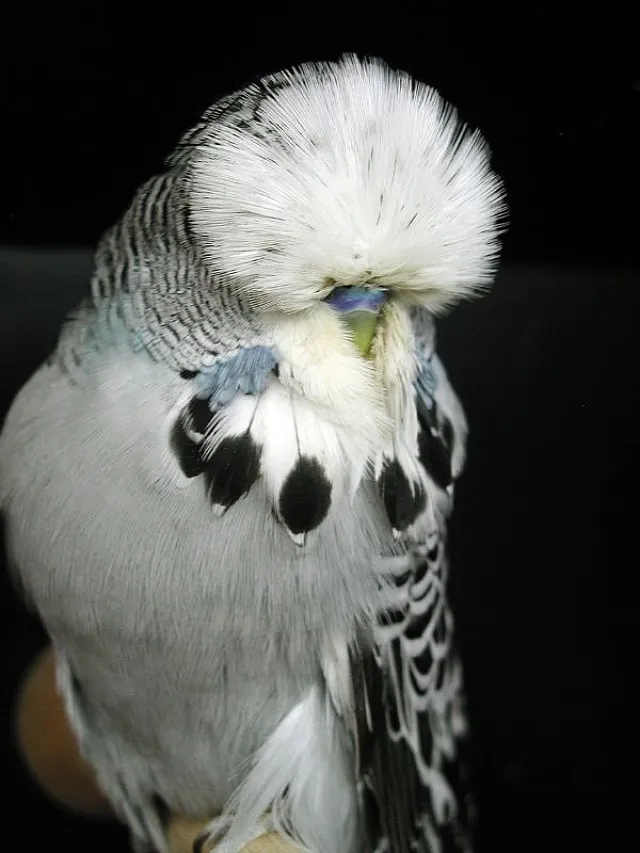
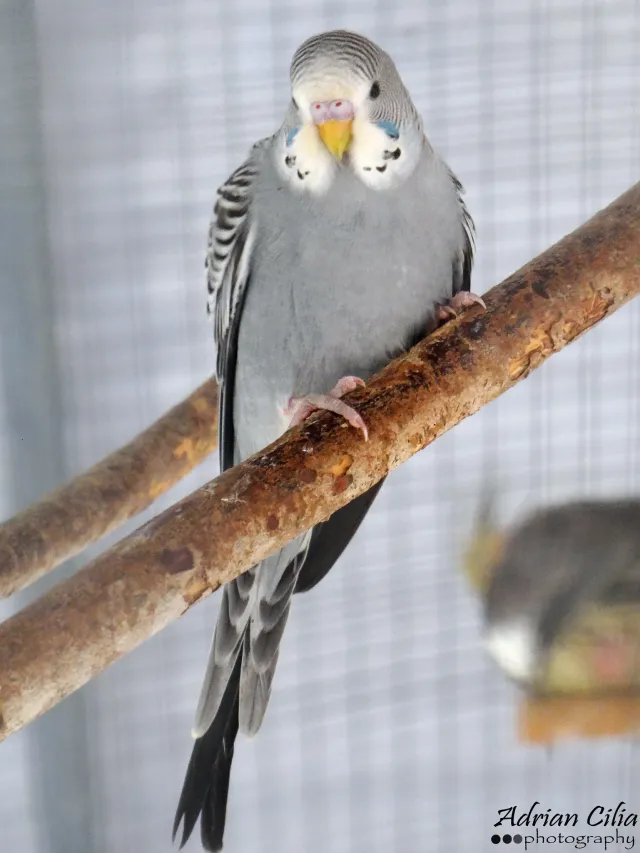
Albino Budgie
In the realm of white-based budgies, the Albino Budgie represents a unique, starkly different variation.
Characterized by its pure white plumage, this bird stands out for its absence of color.
According to the standards, an Albino Budgie should exhibit a completely white body, devoid of any other color pigmentation.
Its eyes should be red, with the absence of eye rings, and the beak and feet should be a light pink.
The Albino Budgie offers a startlingly beautiful contrast to its colorful counterparts, a testament to the range of diversity in budgie colorations.
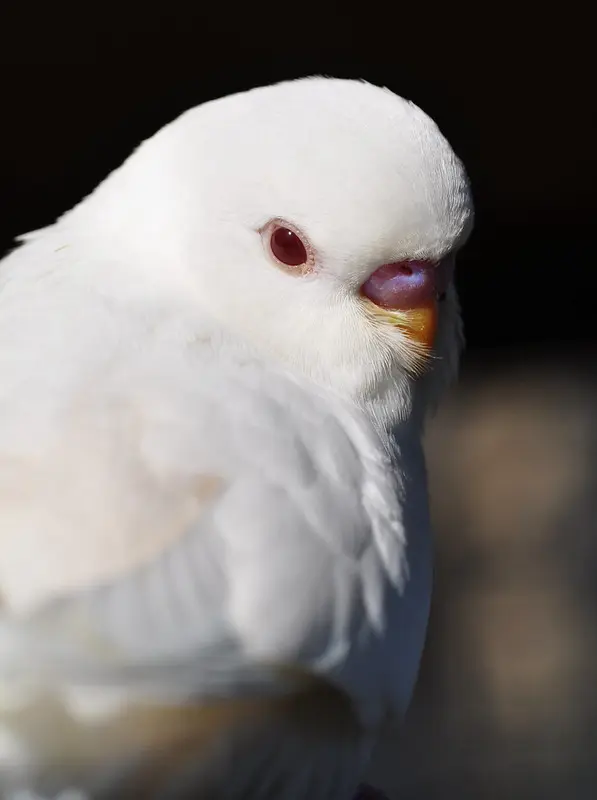
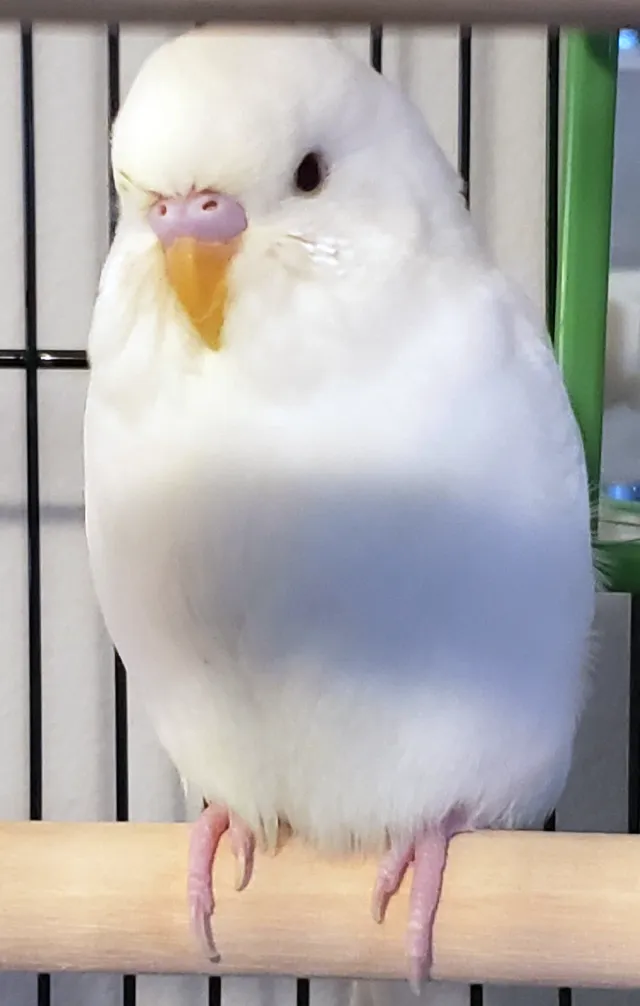
Baby And Young Blue Budgie
When it comes to Baby and Young Blue Budgies, it’s important to note that these birds undergo significant changes in their physical appearance as they grow.
Initially, their plumage is more dull and fluffy, lacking the full vibrancy and sleekness that characterizes adult birds.
Their eyes are typically dark, lacking the white iris that forms as they mature.
Additionally, their cere (the area above the beak containing nostrils) is typically a uniformly purplish-pink, regardless of gender, which only develops into its gender-specific color as the budgie grows older.
As the baby and young Blue Budgie matures, its coloration begins to intensify, its feathers lose their fluffiness, taking on a more streamlined appearance, and the white iris begins to form around their eyes, signaling their approach towards adulthood.
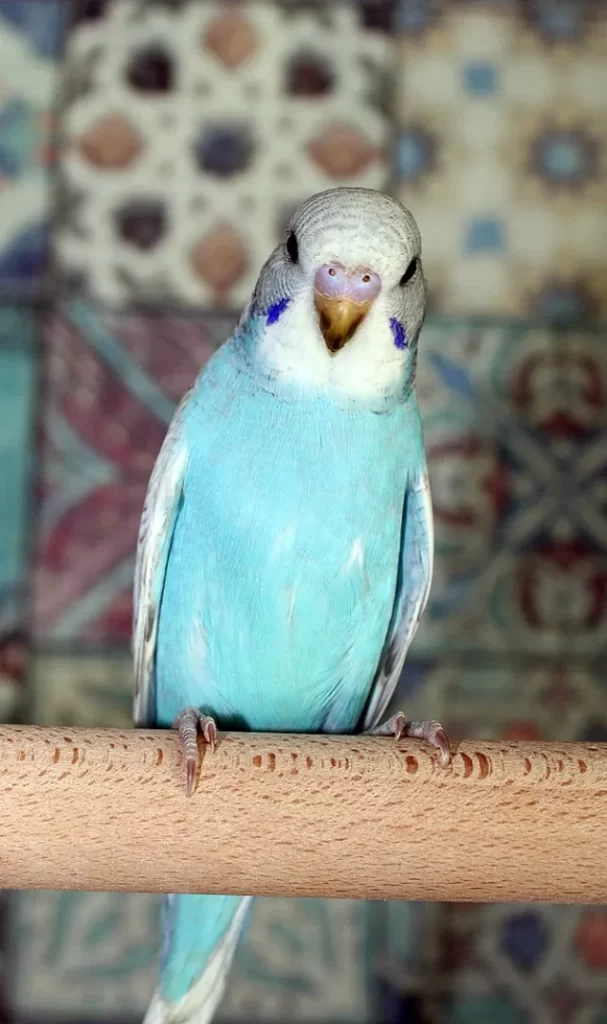
Why Don’t We See Blue Budgies In Their Natural Habitat?
When it comes to Blue Budgies, it’s interesting to note that they are not typically found in their natural habitat.
This might seem strange considering the wide array of colors these charming birds display in domestic settings.
However, the reason behind this lies in the principle of natural selection.
In the wild, budgies predominantly display green and yellow hues, colors that help them blend in with their surroundings, providing a crucial advantage when it comes to avoiding predators.
Simply put, the blue coloration doesn’t offer the same level of camouflage and therefore, doesn’t lend itself to survival in the wild.
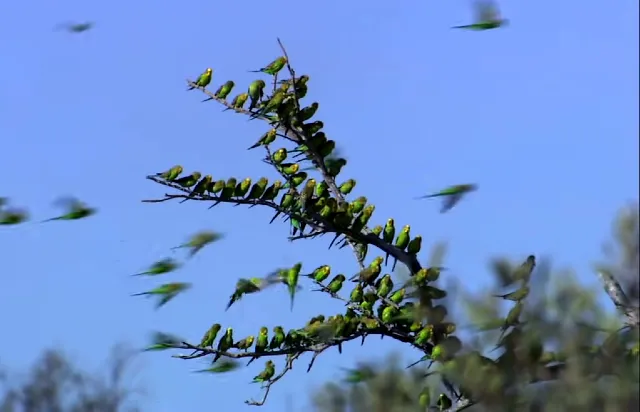
If We Do Not See Blue Budgies In Nature, How Did Blue Budgies Come About?
The existence of Blue Budgies today is largely thanks to selective breeding by humans.
The blue coloration is a result of a genetic mutation that inhibits the production of yellow pigments, allowing only the blue pigmentation to shine through.
This mutation is known as White-based, referring to the lack of yellow pigmentation.
Through the process of selective breeding, bird breeders were able to isolate and propagate this trait, resulting in the Blue Budgies that we know and love today.
What Is The Difference Between Blue Budgies And Other Budgies, Except Their Color Is Blue?
Beyond their captivating blue color, Blue Budgies are virtually identical to their counterparts of different color variations in terms of physical characteristics and behavior.
They share the same size, shape, and behavioral traits as any other budgie.
Their diet, lifespan, and care requirements remain consistent across the species as well.
However, within the Blue Series Budgies, there can be further variations in color intensity, feather pattern, and marking.
These can be influenced by a number of factors, including genetics, diet, and environment.
So, while their vibrant blue plumage may distinguish them visually, beneath the surface they’re just like any other budgie.
Visual And Behavioral Characteristics Of Blue Budgies
Plumage
One of the most distinguishable characteristics of Blue Budgies is their stunning plumage.
As per the standarts, Blue Budgies should exhibit an even and vibrant blue coloration across the body, with variations ranging from light sky-blue to deep cobalt.
While the plumage color differs drastically from other color variants, the feather structure remains consistent across all Budgies.
There is no discernible difference in the quality, texture, or pattern of the feathers between Blue Budgies and other Budgies, except the color.
Cere
The cere is the fleshy, wax-like structure that contains the nostrils at the base of the budgie’s beak.
In Blue Budgies, the color of the cere varies depending on the gender and hormonal state of the bird.
In accordance with the standarts, mature males typically have a royal blue cere, while females have a brown or crusty tan cere, particularly during breeding season.
This is consistent across all color variations of Budgies.
Eyes
When it comes to the eyes of Blue Budgies, they are similar to other budgies in terms of structure and function.
Their eyes are usually a solid black in their center with a white ring around, consistent with the standarts.
The ‘iris ring’, which gives the appearance of a pupil, develops as the budgie matures and it’s white in color, which can be more prominent in some Budgies than others.
This is not specific to Blue Budgies and is common across all color variants.
Beak
The beak of a Blue Budgie doesn’t differ significantly from other Budgies, other than slight color variations.
As per the standarts, Budgies usually have a light, horn-colored beak.
The upper beak is considerably hooked, while the lower beak is shorter and aligns with the upper beak.
This is consistent across all budgie colorations, including the Blue Budgie.
Wings
The wings of Blue Budgies are a visual spectacle, characterized by a darker hue compared to their body, usually a deeper blue or black.
The standarts indicate that their primary and secondary flight feathers should exhibit clear, defined stripes.
But aside from the color, the shape, size, and flight capabilities of their wings are similar to other Budgies.
Tail
Blue Budgie’s tail feathers, according to the standarts, are long and should be the same color as their body, or a slightly darker hue.
There are no specific differences in terms of tail shape, length, or function between Blue Budgies and other budgie colorations.
Feet
The feet of Blue Budgies, similar to all budgie variants, are light pink or brownish in color, with short toes equipped with sharp claws, used for perching and climbing.
According to the standarts, there is no significant difference in the structure, functionality, or color of the feet across different budgie color variations.
Breeding: How To Breed Blue Budgies?
In the realm of budgie breeding, genetics play a paramount role, especially when the goal is to produce a specific color variant like the Blue Budgie.
Unlike the breeding process of other budgies, breeding Blue Budgies requires a more nuanced understanding of budgie genetics and the concept of color inheritance.
In budgie genetics, the blue coloration is a result of a recessive gene.
In simple terms, recessive genes require two copies – one from each parent – to display the trait.
The blue budgie’s coloration is the result of a lack of yellow pigment, called psittacofulvins, which is masked by the blue structural color in their feathers.
The gene that suppresses the production of this yellow pigment is what we refer to as the ‘blue’ gene.
When breeding Blue Budgies, if both parent budgies are blue, then all their offspring will inherently be blue.
This is because both parents are carrying two copies of the blue recessive gene, ensuring that every chick will receive a blue gene from each parent.
If only one parent is blue and the other is green, it becomes more complicated.
The green parent may or may not carry a hidden blue gene.
If the green parent is a carrier of the blue gene (known as being split for blue), then there is a chance some of the chicks will be blue.
If the green parent does not carry the blue gene, all the chicks will be green but they will be split for blue – carrying the blue gene hidden – if they inherit it from their blue parent.
To further complicate things, if both parents are green but are both split for blue, then roughly one in four of their chicks will be blue.
This reflects the probabilistic nature of inheritance where each chick has an independent 25% chance of inheriting the blue gene from both parents.
Breeding Blue Budgies, thus, requires not just a pair of budgies, but also an understanding of their genetic background and color lineage.
It is through this knowledge that breeders can plan and predict the possible color outcomes of their breeding pairs, allowing them to selectively breed for Blue Budgies.
Faqs
Are Blue Budgies Rare?
Blue Budgies are not considered rare in the pet trade or among bird breeders.
Although their vibrant blue coloration may seem unique, it is a result of a specific combination of genetic factors that are well-understood and can be reliably reproduced in a breeding context.
However, depending on the specific shade or variant of blue, some may be less commonly seen than others.
How To Tell The Age Of A Blue Budgie?
Determining the age of a Blue Budgie can be tricky, especially after their first molt, which usually occurs around 3-4 months of age.
Young budgies typically have stripes or “bars” on the forehead that recede to the cap of the head after the first molt.
Additionally, their eyes are generally dark, becoming lighter with an observable iris ring as they age.
Are Blue Budgies Female Or Male?
The color of a budgie, including Blue Budgies, does not determine its sex.
Both male and female budgies can be blue.
To determine the sex of a budgie, one should look at the color of its cere (the area containing the nostrils).
In mature budgies, males usually have a blue cere, while females have a cere ranging from white to brown, depending on the breeding cycle.
How Long Do Blue Budgies Live? Blue Budgie Lifespan
Blue Budgies, like all budgies, have a lifespan that can range from 5 to 15 years depending on their genetics, diet, care, and overall health.
With excellent care, including a balanced diet, regular exercise, and mental stimulation, Blue Budgies can live longer, healthy lives.
Are Blue Budgies Healthy?
The color of a budgie does not inherently affect its health.
Therefore, Blue Budgies are just as healthy as budgies of other colors, given they are cared for properly.
Their health depends on factors such as genetics, diet, environment, and veterinary care, rather than their color.
What Do Blue Budgies Eat?
Blue Budgies, like all budgies, thrive on a varied diet.
They primarily eat a seed mix designed for budgies, but this should be supplemented with fresh fruits, vegetables, and occasional protein sources such as boiled eggs.
What Should I Name My Blue Budgie?
Choosing a name for your Blue Budgie can be a fun and personal decision.
You could draw inspiration from their blue coloration with blue budgie names like “Sky,” “Azure,” or “Sapphire.” Ultimately, the name should be one that you enjoy and feel fits your new feathered friend.
How Much Does A Blue Parakeet Cost?
The cost of a Blue Parakeet (another common used name for a budgie) can vary widely depending on factors such as the bird’s age, the breeder’s pricing, and your geographical location.
On average, budgies can cost anywhere from $10 to $60 USD in pet stores, and specialized breeders may charge higher for specific colors or variations.
Apart From Their Blue Color, Do Blue Series Budgies Have Any Different Features From Other Birds?
Apart from their distinctive color, Blue Series Budgies share the same physical characteristics and behaviors as other budgies.
They are small, sociable, and highly intelligent birds.
The blue coloration does not impact their behavior or physical features beyond their feather color.
As with all budgies, individual personality variations will occur, making each bird unique.
How Are The Different Colors Of Blue Budgies Determined?
The colors of Blue Budgies are largely determined by their genetic makeup. The Sky-Blue, Cobalt, Mauve, and Gray varieties each represent a different intensity of blue.
This is mainly due to the variations in the depth of pigmentation present in each bird.
What Causes The Albino Variation In Blue Budgies?
The Albino Budgie is a unique variety that lacks any pigmentation.
This happens due to a genetic mutation named ino mutation that suppresses the production of all pigment, resulting in a bird with pure white feathers and red or pink eyes.
Are Violet Blue Budgies Naturally Occurring?
Yes, Violet Budgies are naturally occurring.
The Violet Budgie is characterized by its deep, rich color, which is the result of a combination of the blue and dark factors in their genetic makeup.
What Distinguishes White-Based Blue Budgies From Other Varieties?
White-Based Blue Budgies are distinguished by their lighter tones. Unlike other Blue Budgies that have varying intensities of blue, the White-Based variety has a predominantly white coloration with shades of blue.
How Can I Identify The Specific Variety Of My Blue Budgie?
To identify the specific variety of your Blue Budgie, observe its coloration closely.
The intensity and shade of blue can help identify its variety – Sky-Blue, Cobalt, Mauve, or Gray.
Albino Budgies will be pure white with red or pink eyes, while Violet Budgies have a deep, rich color.
White-Based Budgies will exhibit lighter tones overall.
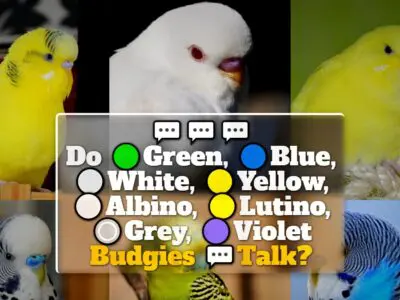
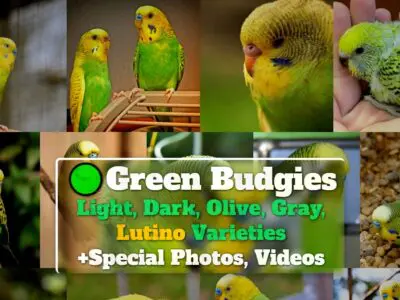
![Purple/Violet Budgies: Appearance, Breeding, [+PHOTOS]](https://www.petiska.com/wp-content/uploads/2022/07/purple-violet-budgies-appearance-breeding-photos-1656922763-400x300.jpg)